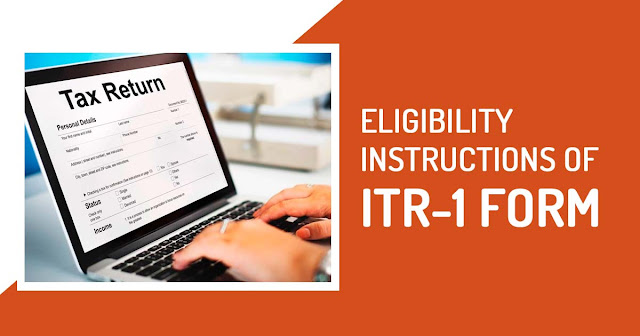Form ITR-1 is used to furnish the ITR also for FY 2021-22; half of the ITR has been filed through it. Most of the salaried assessee use the same ITR form also known as Sahaj, therefore, taxpayers can easily online file ITR 1 Sahaj form for assessment years 2021-22. ITR-1 would be furnished when:
- The assessee is a Resident Individual
- The income does not exceed Rs 50 lakh.
- Salary, one house property, agricultural income up to Rs 5,000 and additional sources such as interest from a savings account, deposits, income tax refund, family pension are his income sources.
- Joining of the income within spouse or minor.
You must note that the ITR-1 would be practiced to furnish the ITR even if you own one property mutually with your spouse. But there are various cases in which an assessee would not use ITR-1 to furnish the tax returns for the FY 2020-21 even while holding the mentioned income sources.
When The ITR-1 Cannot Be Used by You
As per the tax compliance, a person would not be able to furnish the ITR-1 if any of the below-mentioned standards meets:
- Investments in unlisted equity shares
- Director if a company
- Hindu Undivided Family (HUF)
- Holding foreign assets such as stocks of a foreign company and others.
- Deferred income tax on ESOP (Employees' Stock Ownership Plan) obtained via an employer as a qualified start-up.
- Acknowledges and poses exceeding one house property (either owned as single or jointly)
- Agriculture income in a financial year exceeds Rs 5,000
- Is a Resident Not Ordinarily Resident (RNOR) and Non-resident Indian (NRI)
- Have taxable capital gains (short term and long term)
- Total income from all sources exceeds Rs 50 lakh
- Income from the lottery, racehorses, legal gambling, and others.
- Losses that have been carried along or to be carried ahead for next year beneath the head 'Income from house property.
- Business or professional income
- The tax has been deducted beneath section 194N of the income tax act. The TDS is being deducted beneath section 194N on the cash withdrawals surpassing a specific limit given that particular conditions are determined.
What Would One Do If They Lose to Furnish The ITR-1
A person who does not get fit in the eligibility criteria of ITR-1 must not fear. These people would practice different ITR forms to furnish their tax returns. For example, people who get the capital gains (either short-term and/or long-term), have the unlisted equity shares, or is a director of a company would practice ITR-2 to furnish their ITR.
Also identical to that, the individuals/HUF who have the income from business or professional income would practice ITR-3 to furnish their ITR.


Comments
Post a Comment